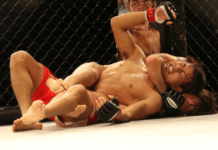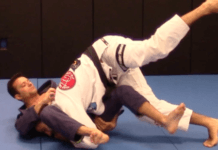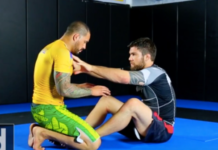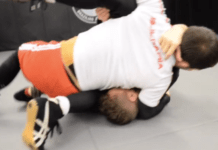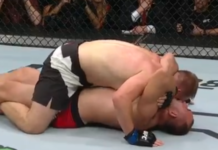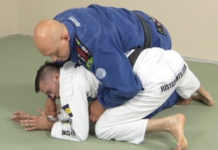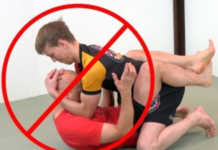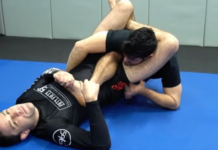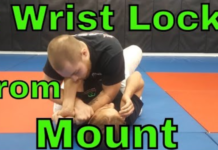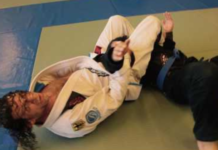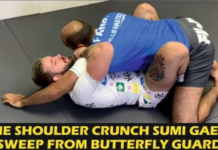Being able to retain your guard is one of the most important skills that you can master in BJJ. Far too often the BJJ practitioners fall prey to their opponent’s guard passes without even trying to retain their guards. However, what they fail to realize is that everyone can and should learn the guard retention techniques and principles. This article will set out to teach you just that. After reading this article, you will have a basic knowledge on the subject of retaining your guard.
The basic principles of Guard Retention
If you feel that your opponent is about to pass your guard, then this is the best time to act. There are a few basics that you need to do every time you face this risk. The first thing to do is to keep calm and face your opponent. As you know, in order to pass your guard, your opponent needs to come to the side of you and fall into side-control. However, if you keep rotating your body so that you always face your opponent – he won’t be able to do this any longer. So, the first principle of guard retention is to try and always face your opponent.
But sometimes, this may not be possible.
Control the Head
Your opponent may be half-way to passing your guard and perhaps he has stopped you from facing him. Fear not – there is still time to save your position. One of the key areas of control that many people fail to acknowledge in BJJ is the person’s head. If you control your opponent’s head with your hands, then he won’t be able to move as efficiently and he will have to deal with your hands first. This will give you the time to move your body away and reset your primary position – retaining your guard in the process.
Knee position
It’s very important to keep your knees together – as much as you can. By this, we don’t mean that you should keep them close with no space between them. We mean to keep them close to your chest -as close as possible. It’s very hard to pass a person’s guard if he manages to keep his quads against his chest. You will somehow need to manually pull away from his legs so that you can enter side-control – or else you won’t be able to do this. So, it’s typically a mistake to keep your knees far away from your chest because this will make it very easy for your opponent to just grab you by the knees and pass your guard freely.
Also, in order to retain you guard – no matter what that guard may be – you will need to keep close to your opponent.
Let’s say you have a butterfly guard between your opponent’s legs. If you keep farther away from him, then he will easily be able to pass. What you need to do instead is keep close to him. And we don’t mean that you should do just that – you will also need to use your hands and keep this closeness. Use your grips to keep your opponent close and he will have a very hard time to pass your guard. Some of these concepts are explained by professor Bernardo Faria – check the video at
There are many other deeper principles of guard retention. But these were some of the most important ones. And by just following these simple principles – you will get to notice that your guard-retention game has grown by leaps and bounds.
Guard retention – specific techniques
Half-Granby
There are a few important techniques that you need to do if you wish to consistently retain your guard. Below you will find some more information about them.
The first guard-retention technique that we love to use is the half-Granby. Even though this may seem like a move that demands flexibility and agility – this is far from the truth. Truth be told – it does require a basic level of flexibility and agility – but this is a skill that most people can easily learn and implement in their game. If your opponent starts passing your guard then you will need to fall back on your head, lift your legs and swing them around so that you will get your guard back. If it’s difficult to visualize this move just by reading this text – you can see the video demonstration below
Frame and Hip Escape
Also, you should learn to make frames. You can use your hands and legs to do so. If your opponent tries to pass, then you can use one of your hands to block his advance at the collar and the other to set a base for your body in the back. If you sense that your opponent can’t advance from here – it’s time to scoot your hips back and reset the position. For a video demonstration – check
Points of contact
Ideally, you will want to have 4 points of contact. This corresponds to the number of limbs that you have – 2 arms and two legs. If you have full contact at the four points with your opponent’s body, then you will be able to push him or pull him without him being able to do much about it. Needless to say – he won’t be able to pass your guard as easily. However, BJJ is a very fluid and volatile sport. It’s all but impossible to maintain 4 points of contact with your opponent at all times, no matter what your skill level. Sometimes you will need to do a transition to another guard – it’s completely normal for you to use one point of contact and fall down to three.
However, be sure not to lose any additional points of contact as this will leave openings for your opponent. Think of it in this way – if one of your limbs in the air, then it means that it’s next to useless as it can’t be used to maneuver the opponent. Finally, if you can’t maintain proper pressure with your hands and feet, then you can use your elbows and knees. If you want to hear a bit more in-depth instructions on the subject, then check out Keenan Cornelius’ video at
In conclusion
If you learn some of the concepts and techniques above – then you will dramatically improve your guard-retention game. Your opponents will experience an increasing level of difficulty when they will set out to pass your guard. And this is one of the core most important skills that you can learn for BJJ.
Check also:

